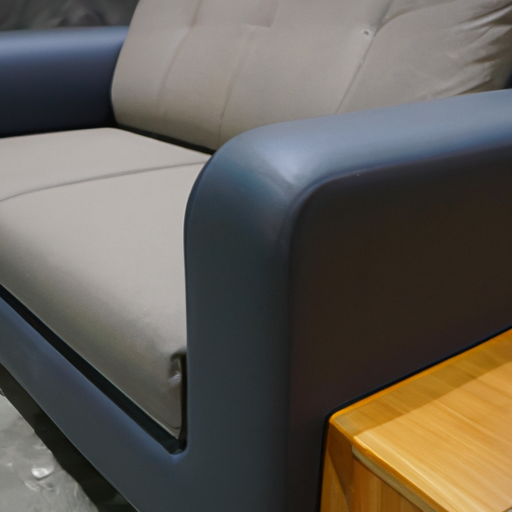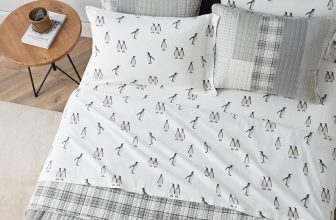sleephall.com is a participant in the Amazon Services LLC Associates Program, an affiliate advertising program designed to provide a means for sites to earn advertising fees by advertising and linking to Amazon.com so we may earn a commission when you use the links on this page to buy products , thanks.
“Experience Comfort and Ergonomics in Furniture Design – For a Better Quality of Life!”
Introduction
The importance of comfort and ergonomics in furniture design cannot be overstated. Comfort and ergonomics are essential components of any furniture design, as they are key factors in determining how comfortable and functional a piece of furniture is. Comfort and ergonomics are also important considerations when it comes to the overall aesthetic of a piece of furniture. By taking into account the user’s physical needs, furniture designers can create pieces that are both aesthetically pleasing and comfortable to use. Ergonomics also plays an important role in ensuring that furniture is designed to support the user’s body in a way that is both comfortable and healthy. By taking into account the user’s physical needs, furniture designers can create pieces that are both aesthetically pleasing and comfortable to use.
The Impact of Ergonomics on Workplace Safety and Productivity
Ergonomics is the science of designing and arranging the workplace to fit the worker. It is a critical component of workplace safety and productivity. Ergonomics is the practice of designing and arranging the workplace to fit the worker, and it is essential for creating a safe and productive work environment.
Ergonomics is important for workplace safety because it helps to reduce the risk of injury. Poorly designed workstations can lead to musculoskeletal disorders, such as carpal tunnel syndrome, which can cause long-term pain and disability. Ergonomic design can help to reduce the risk of these disorders by ensuring that the workstation is properly adjusted to fit the worker’s body. This includes ensuring that the chair is at the correct height, the keyboard is at the correct distance, and the monitor is at the correct angle.
Ergonomics is also important for productivity. Poorly designed workstations can lead to fatigue, which can reduce productivity. Ergonomic design can help to reduce fatigue by ensuring that the workstation is properly adjusted to fit the worker’s body. This includes ensuring that the chair is at the correct height, the keyboard is at the correct distance, and the monitor is at the correct angle.
Ergonomics is a critical component of workplace safety and productivity. It is important for reducing the risk of injury and for increasing productivity. Employers should ensure that their workstations are properly designed and adjusted to fit the worker’s body. This will help to create a safe and productive work environment.
How to Choose Ergonomic Furniture for Your Home
Ergonomic furniture is designed to provide comfort and support to the body while sitting or standing. It is important to choose ergonomic furniture for your home to ensure that you are comfortable and supported while working or relaxing. Here are some tips to help you choose the right ergonomic furniture for your home.
1. Consider Your Needs: Before you start shopping for ergonomic furniture, it is important to consider your needs. Think about how you will be using the furniture and what type of support you need. For example, if you will be sitting for long periods of time, you may want to look for chairs with adjustable lumbar support.
2. Look for Adjustability: Ergonomic furniture should be adjustable to fit your body. Look for chairs and desks that can be adjusted to the right height and angle for your body. This will help ensure that you are comfortable and supported while working or relaxing.
3. Test It Out: Before you make a purchase, it is important to test out the furniture. Sit in the chair or stand at the desk to make sure that it is comfortable and supportive. If possible, try out different settings to make sure that the furniture is adjustable to fit your body.
4. Choose Quality Materials: When choosing ergonomic furniture, it is important to look for quality materials. Look for furniture that is made from durable materials that will last for years. This will help ensure that your furniture is comfortable and supportive for years to come.
By following these tips, you can find the perfect ergonomic furniture for your home. With the right furniture, you can ensure that you are comfortable and supported while working or relaxing.
The Role of Comfort and Ergonomics in Modern Furniture Design
The role of comfort and ergonomics in modern furniture design is of paramount importance. As the world becomes increasingly digital, the need for furniture that is both comfortable and ergonomic has become more pressing. Comfort and ergonomics are two of the most important factors to consider when designing furniture, as they can have a significant impact on the user’s experience.
Comfort is essential for furniture design, as it ensures that the user is able to sit or recline in a comfortable position for extended periods of time. Ergonomics, on the other hand, is the science of designing furniture to fit the user’s body and provide support in the correct areas. Ergonomic furniture is designed to reduce strain on the body, improve posture, and reduce the risk of injury.
When designing furniture, it is important to consider both comfort and ergonomics. Comfort is essential for ensuring that the user is able to sit or recline in a comfortable position for extended periods of time. Ergonomics, on the other hand, is the science of designing furniture to fit the user’s body and provide support in the correct areas. Ergonomic furniture is designed to reduce strain on the body, improve posture, and reduce the risk of injury.
Modern furniture designers are increasingly incorporating comfort and ergonomics into their designs. This is done by using materials that are soft and supportive, such as memory foam, and by designing furniture that is adjustable to fit the user’s body. Additionally, modern furniture designers are incorporating features such as adjustable armrests, lumbar support, and adjustable headrests to ensure that the user is able to find a comfortable position.
The Benefits of Ergonomic Furniture for People with Back Pain
Ergonomic furniture is designed to provide comfort and support to the body, and can be especially beneficial for people who suffer from back pain. Ergonomic furniture is designed to reduce strain on the body, and can help to reduce the risk of further injury.
One of the main benefits of ergonomic furniture is that it helps to reduce the strain on the spine. Ergonomic chairs are designed to provide support to the lower back, and can help to reduce the risk of developing back pain. The chairs are also designed to provide support to the neck and shoulders, which can help to reduce tension in these areas.
Ergonomic furniture is also designed to promote good posture. Poor posture can lead to a number of health problems, including back pain. Ergonomic furniture is designed to encourage good posture, which can help to reduce the risk of developing back pain.
Ergonomic furniture is also designed to reduce the risk of repetitive strain injuries. Repetitive strain injuries are caused by performing the same movements over and over again, and can lead to pain and discomfort. Ergonomic furniture is designed to reduce the risk of these injuries by providing support to the body and encouraging good posture.
Finally, ergonomic furniture can help to reduce fatigue. Sitting in an uncomfortable chair for long periods of time can lead to fatigue, which can worsen back pain. Ergonomic furniture is designed to provide support to the body, which can help to reduce fatigue and improve comfort.
In conclusion, ergonomic furniture can be beneficial for people who suffer from back pain. Ergonomic furniture is designed to reduce strain on the body, promote good posture, reduce the risk of repetitive strain injuries. For these reasons, ergonomic furniture can be an effective way to reduce back pain and improve comfort.
How Ergonomics Can Improve Comfort and Productivity in the Home Office
Ergonomics is the science of designing and arranging the workplace to fit the worker. It is an important consideration for any home office, as it can help to improve comfort and productivity.
The first step in creating an ergonomic home office is to ensure that the furniture is properly sized and positioned. The desk should be at a comfortable height, allowing the user to sit with their feet flat on the floor and their arms at a 90-degree angle when typing. The chair should be adjustable, with lumbar support and armrests. The monitor should be at eye level, and the keyboard and mouse should be positioned so that the user’s wrists are in a neutral position.
Lighting is also important for an ergonomic home office. Natural light is best, but if this is not available, then a combination of task lighting and ambient lighting should be used. The task lighting should be adjustable and positioned to reduce glare on the monitor.
Noise levels should also be taken into consideration. If possible, the home office should be located away from noisy areas such as the kitchen or living room. If this is not possible, then noise-cancelling headphones or earplugs can be used.
Finally, it is important to take regular breaks. This can help to reduce fatigue and improve concentration. Taking a few minutes to stretch or walk around the room can help to reduce muscle tension and improve circulation.
Conclusion
The importance of comfort and ergonomics in furniture design cannot be overstated. Comfort and ergonomics are essential for creating furniture that is both aesthetically pleasing and functional. By taking into account the user’s physical needs, furniture designers can create pieces that are both comfortable and ergonomic, allowing users to enjoy their furniture for years to come. Comfort and ergonomics are also important for ensuring that furniture is safe and healthy for users, as well as for reducing the risk of injury. Ultimately, comfort and ergonomics are essential components of successful furniture design.







